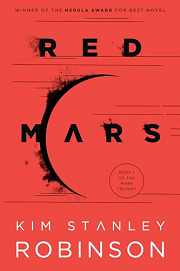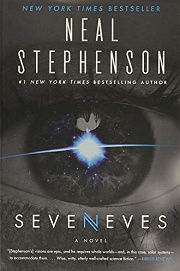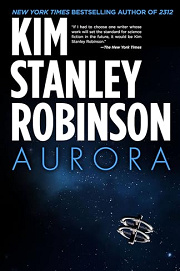Share your thoughts in a quick Shelf Talk!
Red Mars by Kim Stanley Robinson
Scientists, visionaries, and power brokers converge on the red frontier, where the dream of a new world collides with the grit of survival and politics. Meticulous and sweeping, Red Mars charts the first steps of colonizing a planet—and the human costs of remaking it.
Have you read this book? Share what you liked (or didn’t), and we’ll use your answers to recommend your next favorite read!
Love Red Mars but not sure what to read next?
These picks are popular with readers who enjoyed this book. Complete a quick Shelf Talk to get recommendations made just for you! Warning: possible spoilers for Red Mars below.
In Red Mars, did you enjoy ...
... rigorous engineering problem‑solving and plausible mission logistics?
The Martian by Andy Weir
If what grabbed you in Red Mars was watching Sax and Nadia hash out real physics and engineering—air locks, life‑support redundancies, regolith, and the nitty‑gritty of making habitats livable—then Mark Watney’s survival saga will hit the same pleasure centers. You’ll get orbital mechanics rescues, potato‑botany in a Hab, hacked rover comms, and step‑by‑step fixes that feel as tactile and convincing as the First Hundred building Underhill.
... a large, rotating cast of specialists tackling a civilization‑level crisis?
Seveneves by Neal Stephenson
If you liked how Red Mars cycled through Maya, Nadia, Arkady, Sax, and others—each bringing expertise and clashing philosophies to a shared fate—Seveneves offers that same ensemble electricity. From Dinah and Ivy coordinating the Cloud Ark to Doob modeling orbital debris cascades, you’ll get multiple perspectives, technical depth, and the same sense of fragile politics under existential pressure that echoed after Frank Chalmers’s back‑room maneuvers.
... ideological clashes over how to build a new society?
The Dispossessed by Ursula K. Le Guin
If the power struggles and competing visions in Red Mars hooked you—the arguments between Arkady’s cooperative ethos and Chalmers’s realpolitik, the corporate meddling, the revolt that fractures the colony—then Shevek’s journey between anarchist Anarres and capitalist Urras will resonate. You’ll get sharp debates on governance, property, and freedom, anchored in specific choices and consequences just as thorny as the First Hundred’s.
... a sweeping, decades‑spanning vision of humanity’s attempt to settle new worlds?
Aurora by Kim Stanley Robinson
If the long‑horizon ambition of Red Mars drew you in—the generational stakes of terraforming, the logistical and moral calculus of remaking a world—Aurora gives you that epic scope on a starship and a distant colony. Following Freya, Devi, and the ship’s own emergent voice, you’ll confront ecological limits, closed‑loop biospheres, and tough decisions that echo the First Hundred’s arguments about what kind of future we’re entitled to build.
... granular, boots‑on‑the‑regolith detail of Martian geology and settlement planning?
Mars by Ben Bova
If you loved Red Mars for its textured sense of place—the areology surveys, habitat siting, and Nadia’s pragmatism in making Mars livable—Bova’s Mars delivers that same tactile immersion. Navajo geologist Jamie Waterman’s expeditions sift through stratigraphy, escarpments, and puzzling cliff dwellings amid budget fights and mission politics that will feel right at home after the First Hundred’s hard choices at Underhill.
Unlock your personalized book recommendations! Just take a quick Shelf Talk for Red Mars by Kim Stanley Robinson. It’s only a few questions and takes less than a minute.





